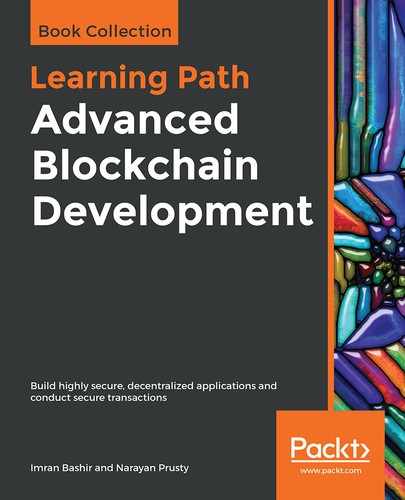The following steps describe the transaction life cycle:
- A user/sender sends a transaction using wallet software or some other interface.
- The wallet software signs the transaction using the sender's private key.
- The transaction is broadcasted to the Bitcoin network using a flooding algorithm.
- Mining nodes (miners) who are listening for the transactions verify and include this transaction in the next block to be mined. Just before the transaction are placed in the block they are placed in a special memory buffer called transaction pool. The purpose of the transaction pool is explained in the next section.
- Mining starts, which is a process by which the blockchain is secured and new coins are generated as a reward for the miners who spend appropriate computational resources. This concept is explained in more detail later in this chapter.
- Once a miner solves the PoW problem it broadcasts the newly mined block to the network. PoW is explained in detail later in this chapter.
- The nodes verify the block and propagate the block further, and confirmations start to generate.
- Finally, the confirmations start to appear in the receiver's wallet and after approximately three confirmations, the transaction is considered finalized and confirmed. However, three to six is just a recommended number; the transaction can be considered final even after the first confirmation. The key idea behind waiting for six confirmations is that the probability of double spending is virtually eliminated after three confirmations.
